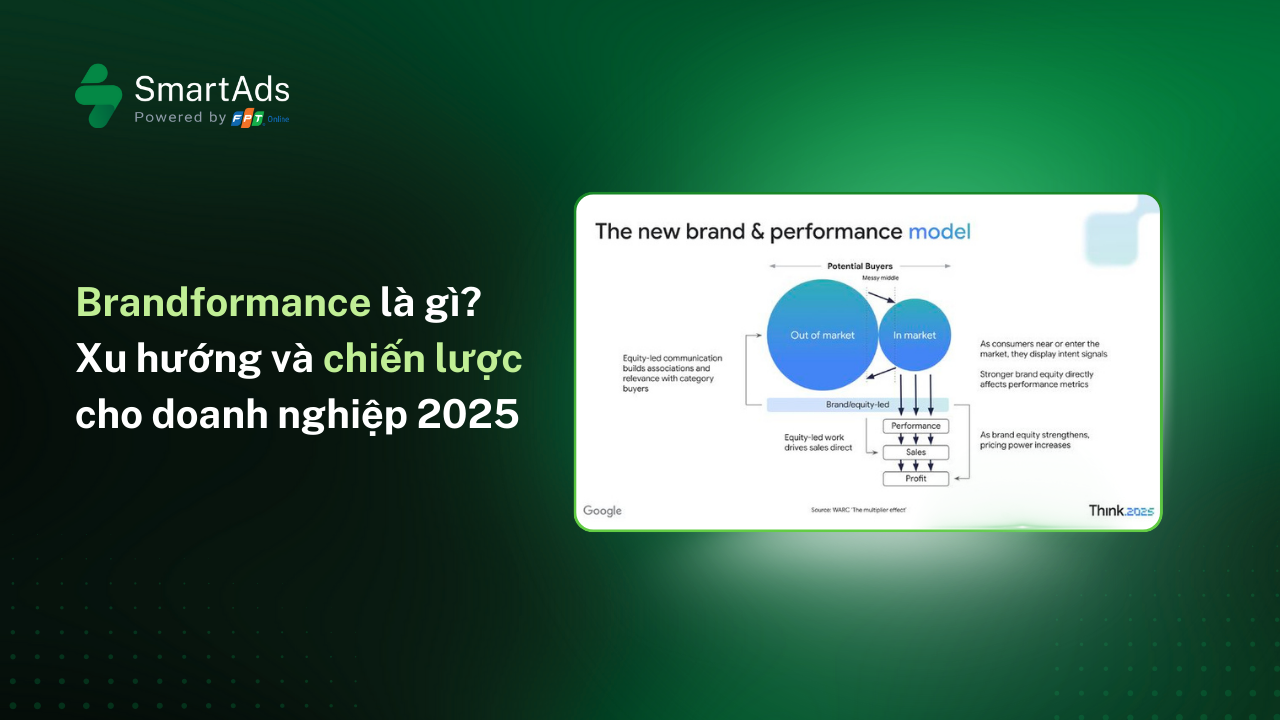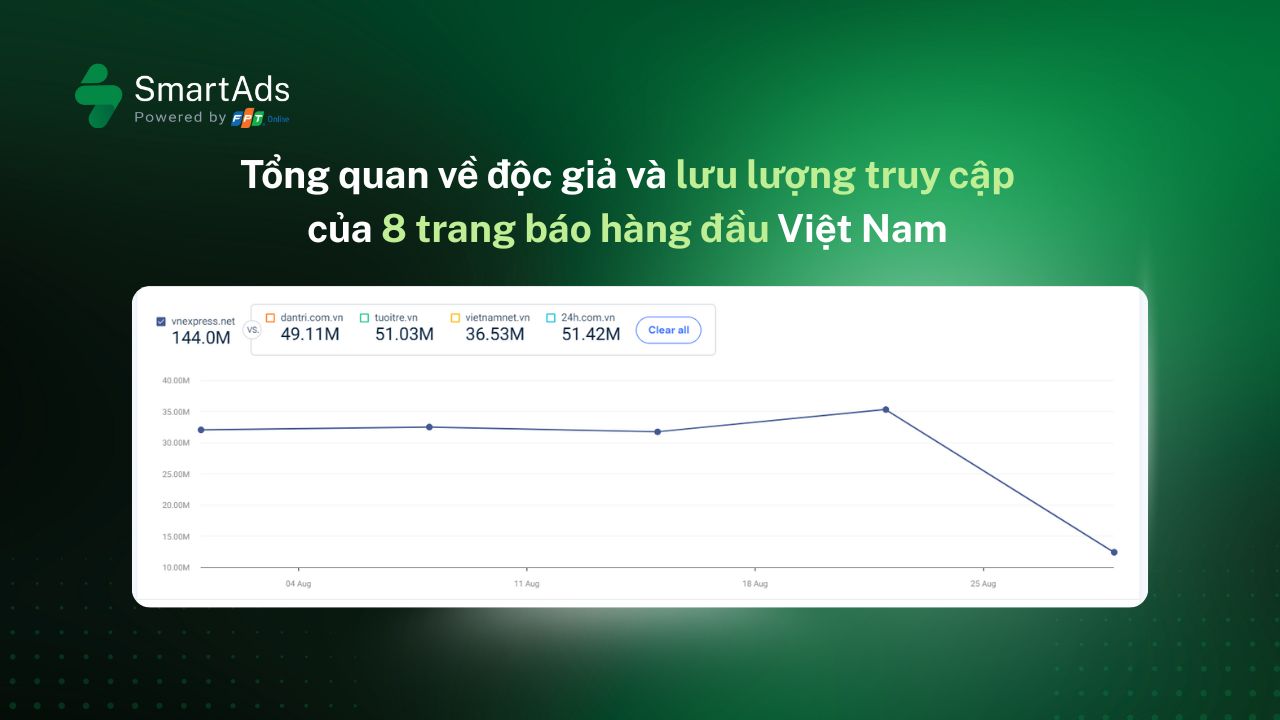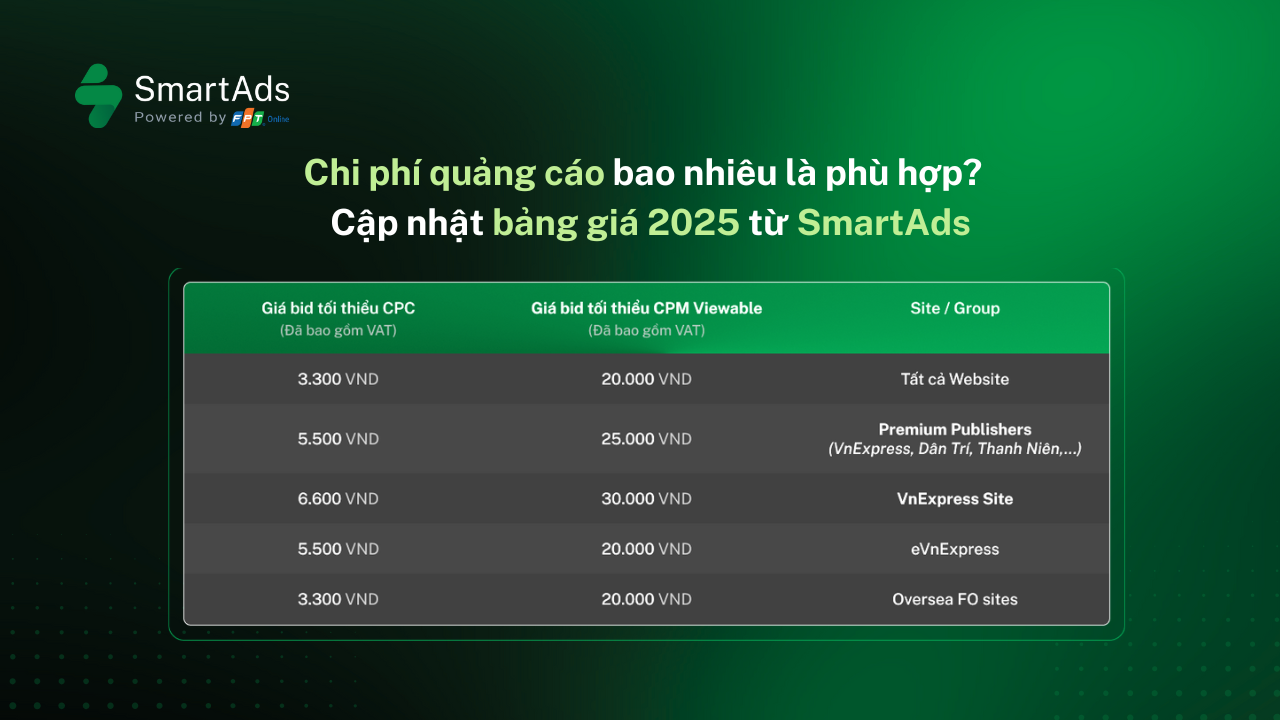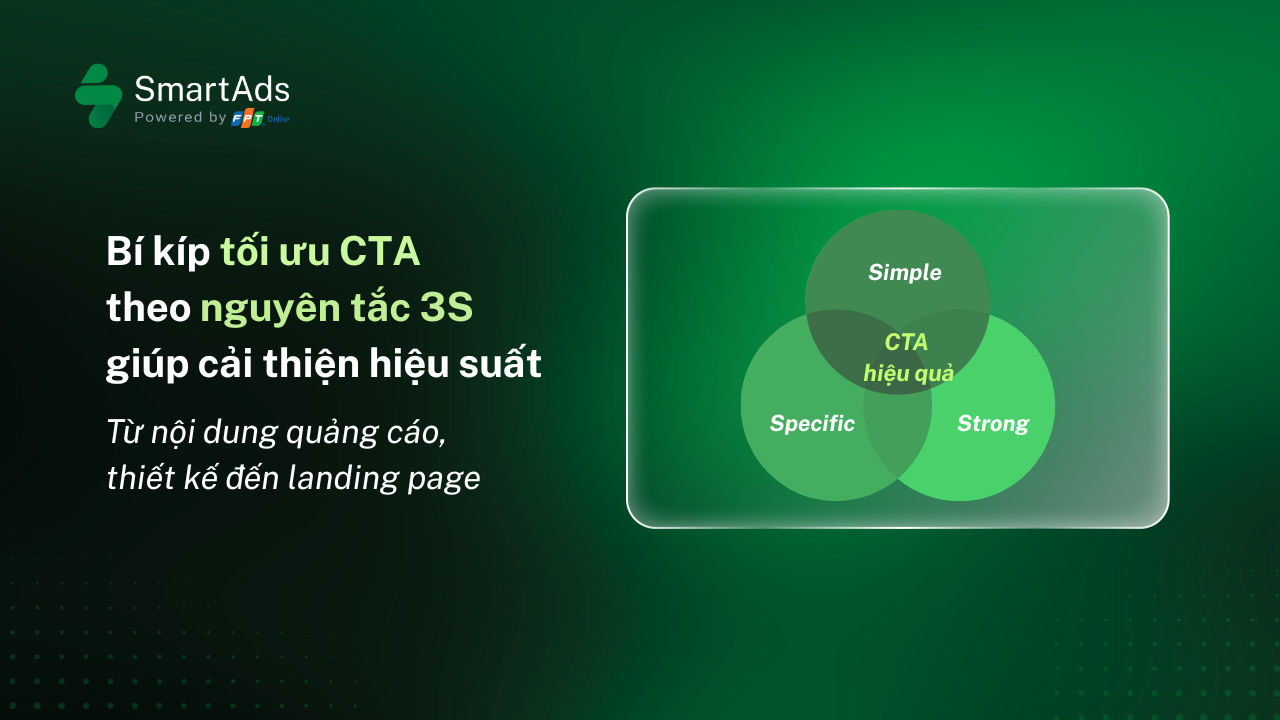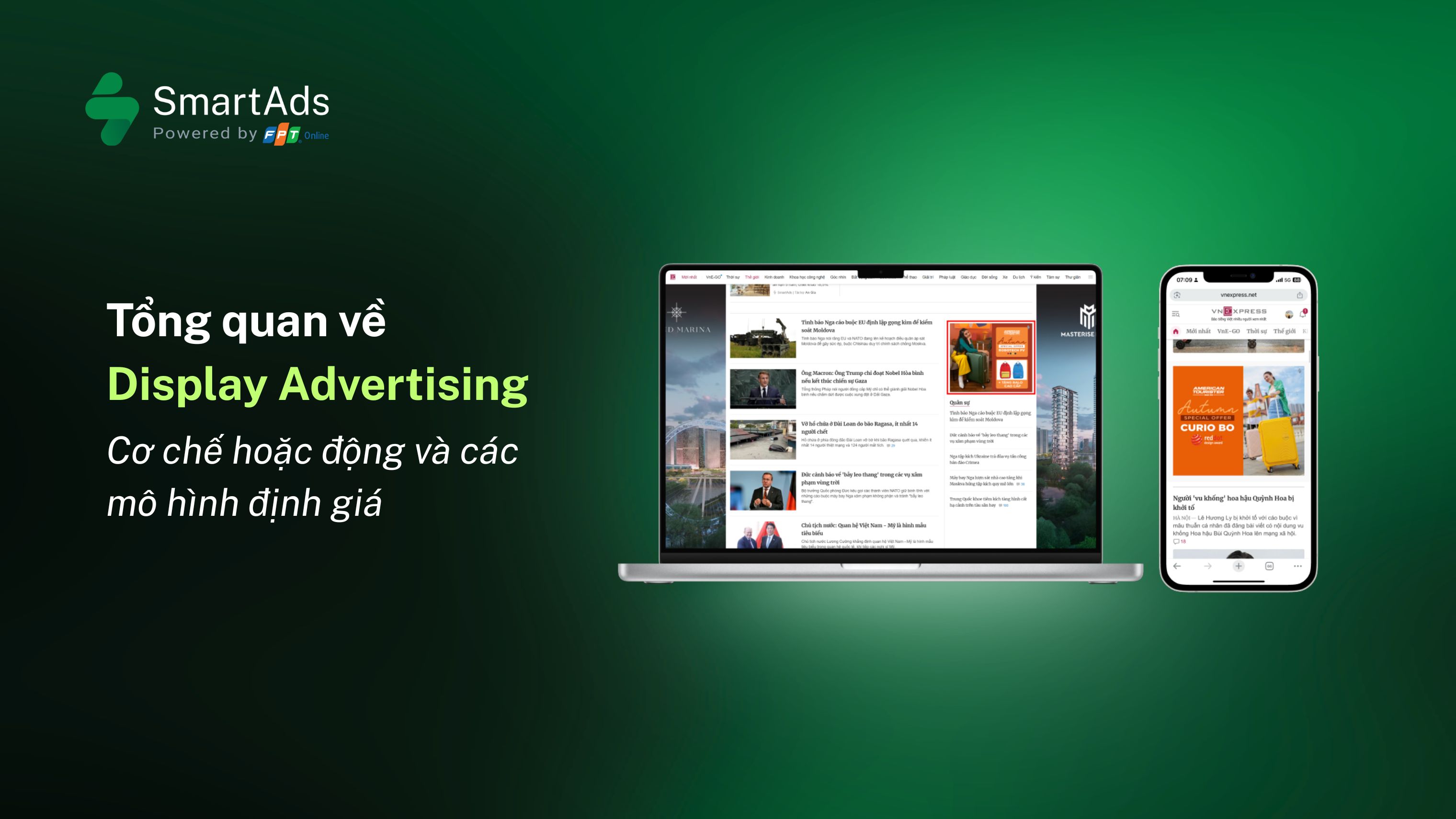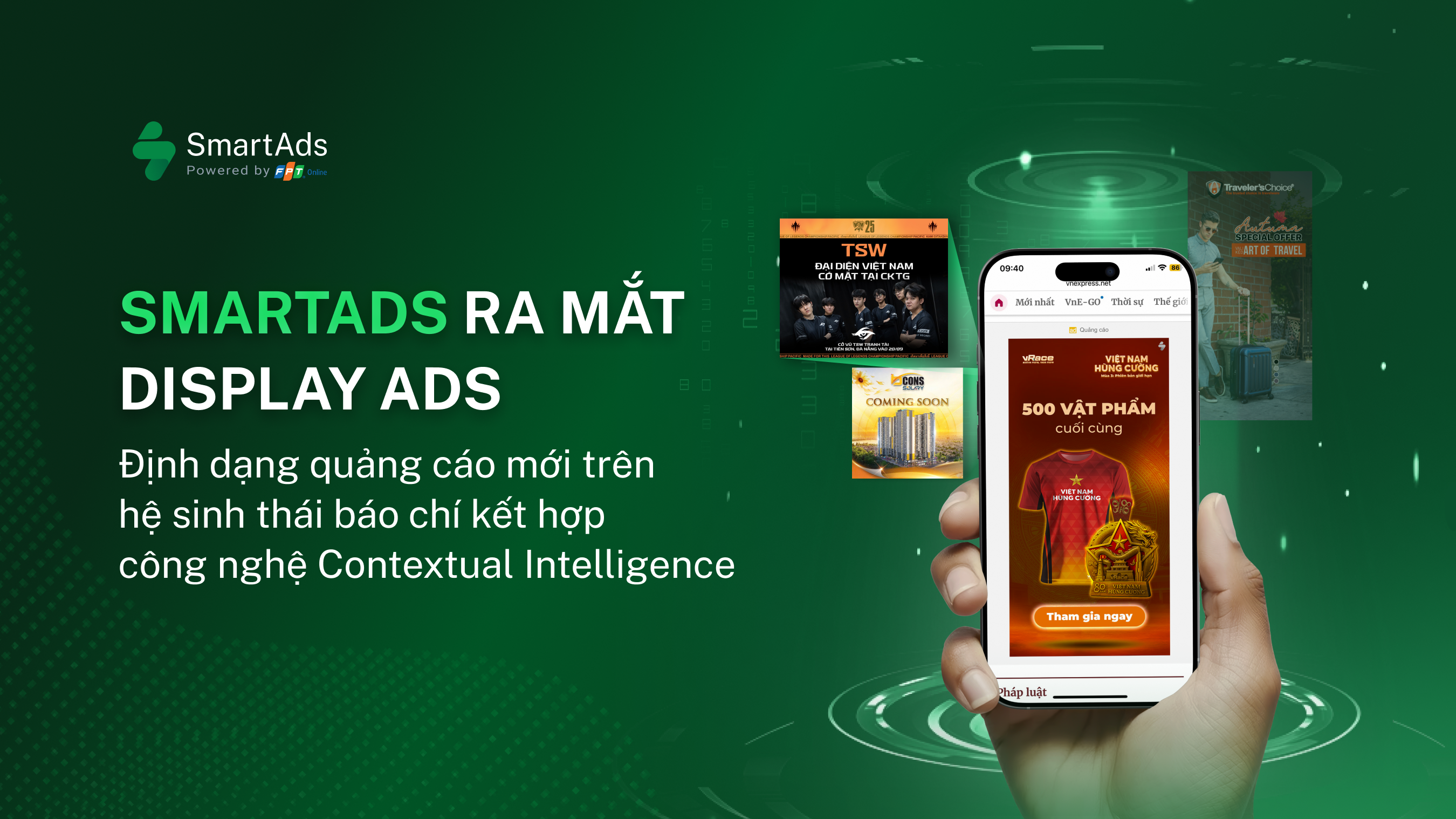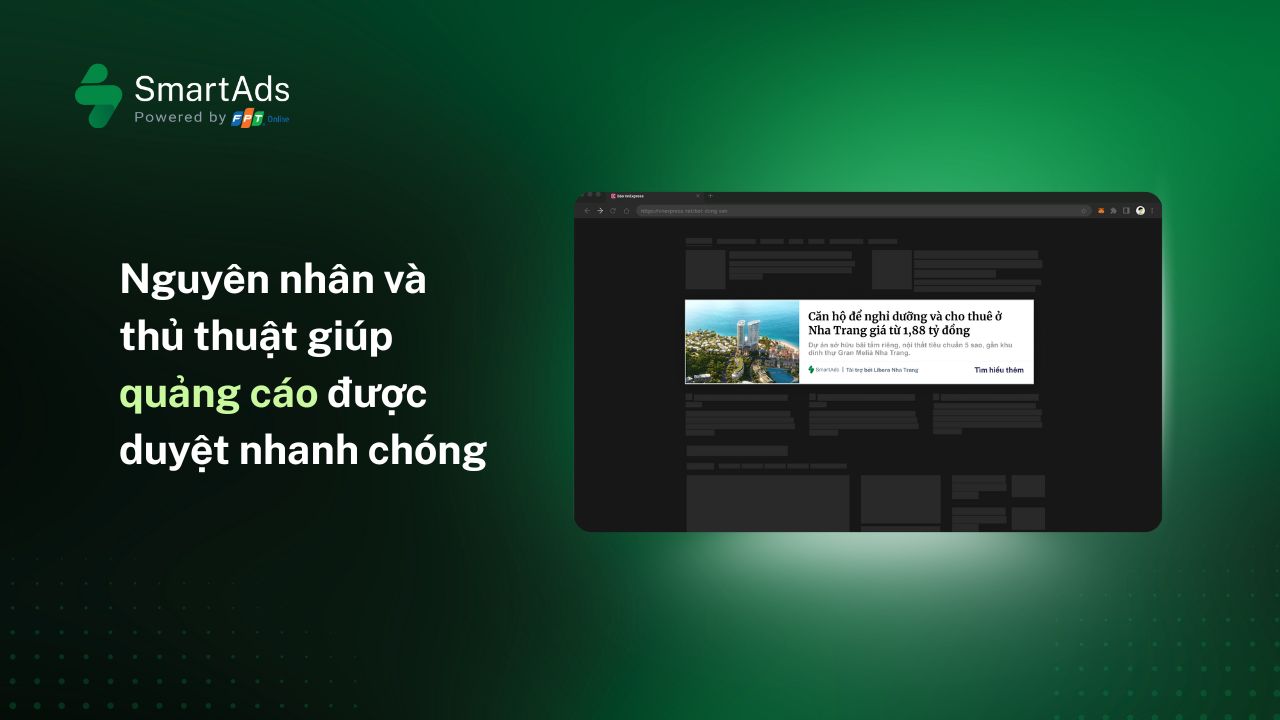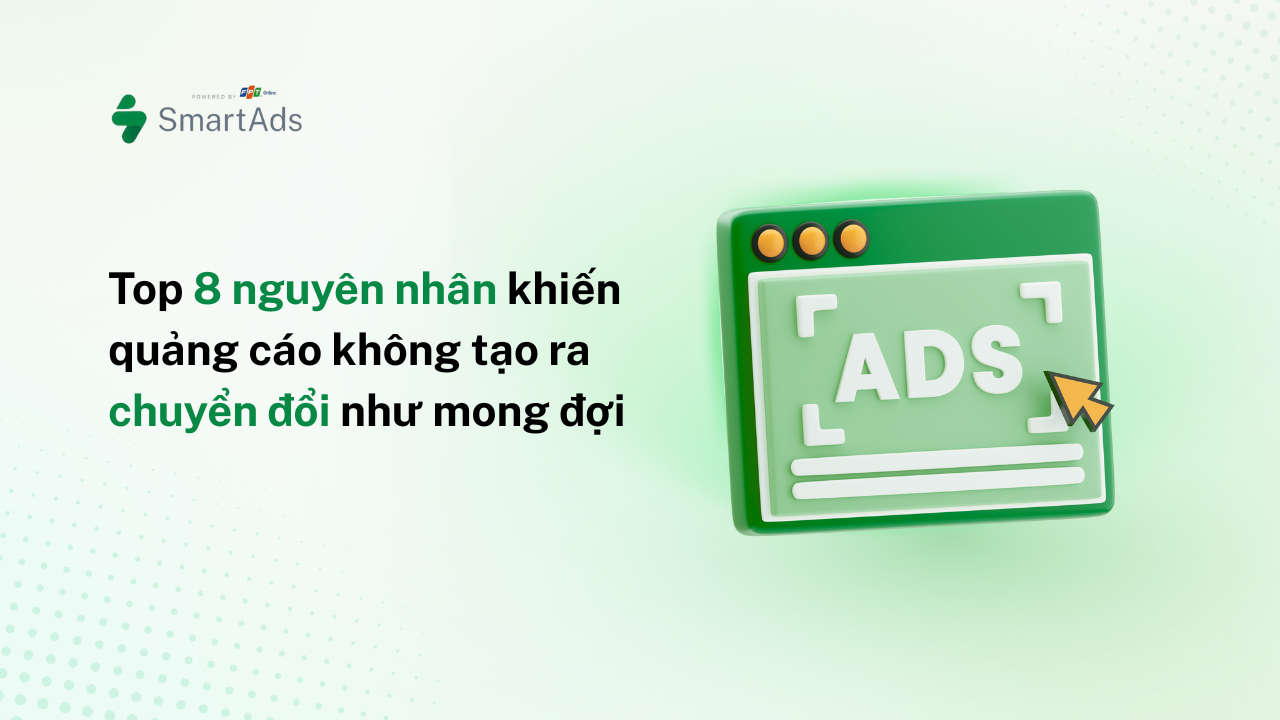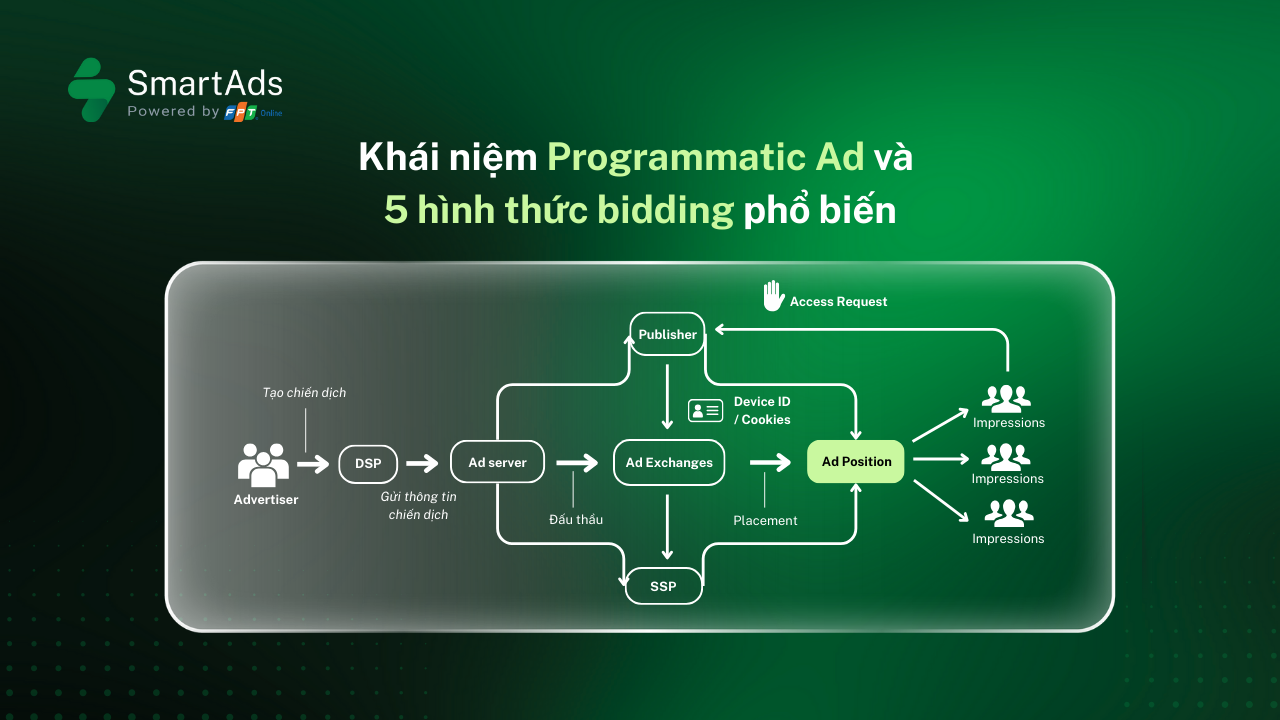I. What is Brandformance? Definition and Digital Marketing Trends 2025
1. Definition of Brandformance
Brandformance is a strategic approach that combines the power of branding and performance marketing — aiming to simultaneously strengthen brand awareness and deliver measurable business results with clear, realistic KPIs. While traditional branding focuses more on brand image, emotions, and storytelling, performance marketing maximizes measurable performance and conversion metrics. The difference between these approaches can be seen through the following key factors:
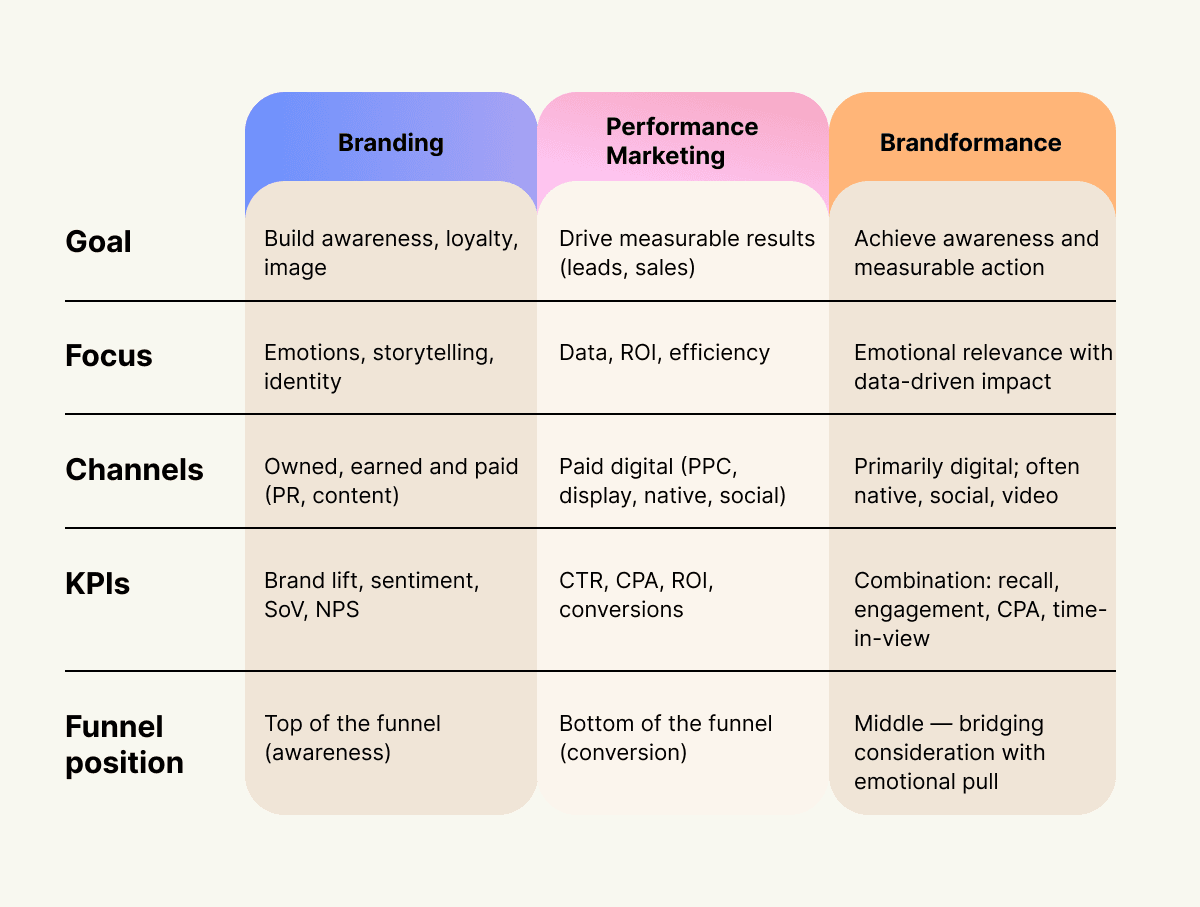
-
Branding: Focuses on building brand awareness, loyalty, and perception. This long-term strategy establishes a strong foundation for emotional branding, fostering deep emotional connections between the brand and its audience.
-
Performance Marketing: Focused on measurable outcomes such as leads or sales. It is a short-term, conversion-driven strategy that directly drives revenue. However, it often lacks emotional resonance and long-term brand equity.
-
Brandformance: Integrates both brand-building and measurable performance objectives. This hybrid strategy bridges the gap between short-term results and long-term brand value.
2. The Brandformance Model According to the Latest 2025 Research
According to the latest 2025 research by WARC introducing the concept of “The Multiplier Effect”, brand and performance will no longer operate separately but instead be integrated under a unified Brand & Performance Model.
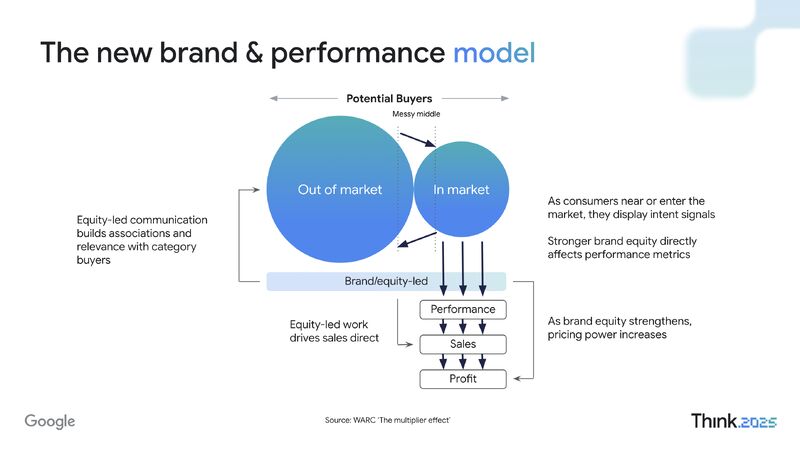
This model categorizes Potential Buyers into two main groups:
-
Out of Market: These are consumers who are not currently in the buying stage. For this segment, equity-led communication (brand value-based communication) plays a crucial role — creating associations, strengthening mental availability, and planting the “brand seed” early. Ignoring this group makes it harder for brands to gain a competitive edge when consumers enter the active buying phase.
-
In Market: This group includes consumers who already have or are about to develop a purchase intent. They show intent signals such as searching for product information, comparing prices, or reading reviews. At this stage, brands with strong brand equity will outperform others in performance marketing because customers already have trust and are more willing to convert.
Overall, brand equity not only drives long-term value but also directly enhances short-term performance efficiency. Focusing solely on performance without a solid brand foundation can increase marketing costs and force brands into a “price race.” Instead of choosing between branding and performance, businesses can pursue both — building a long-term emotional connection while achieving measurable conversion goals. In 2025, this Brandformance strategy will continue to rise as advertising costs grow amid fierce competition and the gradual disappearance of third-party cookies. This shift encourages brands to invest more in AI-powered personalization and programmatic advertising technologies to maximize marketing efficiency.
II. Benefits of Brandformance for Businesses
-
Boost strong and sustainable brand awareness: Brandformance enables brands to achieve multi-channel exposure and deliver outstanding recognition across every touchpoint. Businesses not only become known but also build trust and emotional connections with target audiences—significantly shortening the conversion journey.
-
Optimize ad spend and performance: Strong brand equity enhances ad efficiency—lowering CPA and increasing CTR. Once a brand occupies a position in consumers’ minds, performance activities only need a “gentle push” to drive conversion.
-
Optimize complex customer journeys (Messy Middle): During the consideration phase, a brand with strong awareness can shorten customer touchpoints and seize the advantage to outperform competitors more quickly.
-
Accurately measure brand impact: Unlike traditional branding, which is often difficult to quantify, Brandformance allows businesses to clearly track the campaign’s impact on both awareness and purchase behavior.
-
Build long-term competitive advantage: The combination of “brand love” and “sales performance” helps businesses not only achieve short-term breakthroughs but also strengthen sustainable market positioning.
III. How to build and execute a successful Brandformance Strategy in 2025
1. Applying Digital Ads in Brandformance Strategy
As user behavior becomes increasingly fragmented and experience-driven, digital advertising serves as the ideal landscape for implementing brandformance. Its strength lies in the flexible integration of branding (visibility) and performance (conversion), while leveraging user behavior data for personalized messaging. Therefore, to maximize results, businesses should view digital ads as an “integrated funnel,” where ad formats follow the customer journey from awareness → consideration → conversion. This structure ensures both long-term brand building and short-term business outcomes:
-
Video Ads (Awareness Layer – Branding Objective): Video generates emotional impact, helping brands quickly etch themselves into users’ memories. It’s an ideal starting point for expanding reach, increasing brand recall, and building a foundation for later funnel stages.
-
Display Ads (Recognition Layer – Branding Objective): Display ads extend frequency and maintain brand presence across multiple touchpoints. With targeting and remarketing capabilities, display helps reinforce awareness and keep the brand “top of mind” before users enter the consideration phase.
-
Native Ads (Conversion Layer – Performance Content): Near the bottom of the funnel, native ads excel by blending naturally with premium editorial content—delivering informative, persuasive messages. When combined with performance content and linked to a landing page, native ads act as a “conversion catcher,” driving users from consideration to action (sign-up, purchase, or lead submission).
Applying all three ad formats together creates a synergistic effect—enhancing brand reach, maintaining engagement, and ultimately boosting conversion rates through persuasive content.
2. Combining Performance Strategy and Brand Content Strategy
To build a successful brandformance strategy, businesses must balance short-term performance marketing with long-term brand content, ensuring both immediate results and sustainable growth throughout the customer journey. The chart below highlights the key differences between the two approaches:
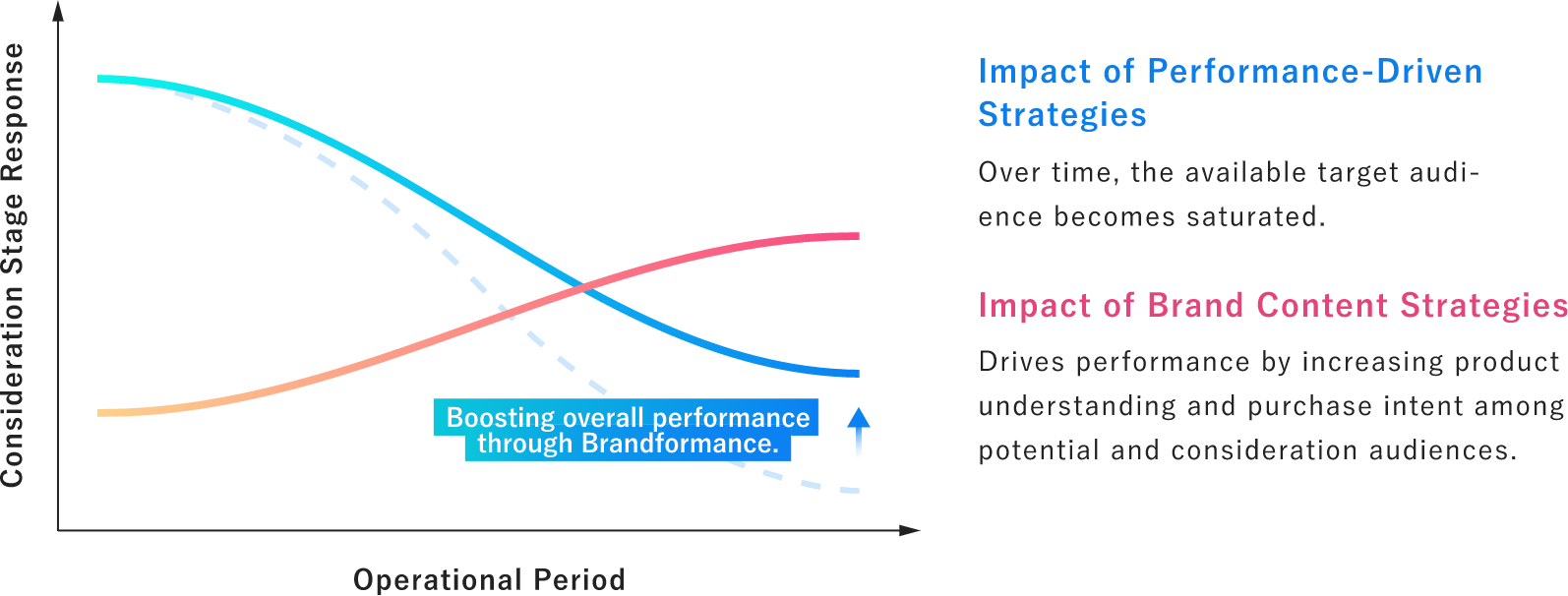
-
Early Stage (TOFU): Performance marketing can deliver “instant results” via promotions or landing page testing. However, relying solely on performance yields short-term effects that are hard to sustain. Meanwhile, brand content at this stage may take longer to show results but builds the foundation for long-term memory and affinity.
-
Middle Stage (MOFU): Performance effectiveness starts to decline as target audiences become saturated, prompting remarketing or audience expansion. Simultaneously, brand content begins to gain momentum—raising awareness, addressing consumer concerns, and fostering trust to drive later-stage actions.
-
Long-term Stage (BOFU): Brand content sustains long-term efficiency by nurturing new customers with higher purchase intent, yielding stable and sustainable ROI. In contrast, continuing performance-only campaigns without brand support leads to declining results over time—like the broken line on the graph.
In short, performance marketing alone may drive quick conversions in the short term, but audience saturation eventually diminishes effectiveness. Conversely, brand content focuses on education, trust, and emotional connection, which may take longer but builds lasting impact. Instead of allocating all budgets to short-term performance, brands should invest consistently in awareness and credibility.
3. Establishing a Measurement System and Clear KPIs for Brandformance
The success of brandformance depends on continuous KPI setup and measurement. Key indicators include:
-
CPM, CPC, CPA: measure cost efficiency
-
Brand Lift, Brand Recall: measure brand awareness
-
Customer Lifetime Value (CLV): measure long-term customer value
Platforms like SmartAds help businesses build efficient dashboards for real-time and transparent monitoring. A success checklist includes: increased brand recall, reduced CPC, continuous conversion growth, and high-quality customer data.
>>> Discover the reasons why your ads keep running but never perform.
4. Maximizing the Role of Data and Automation Technology
Data and automation are not just supporting tools—they are the core pillars that make brandformance efficient and scalable. Focus on three key aspects:
-
Multi-channel data collection: Instead of relying on a single data source, integrate multiple touchpoints such as CRM, social media, websites, mobile apps, and publisher systems. This provides a holistic view of customer behavior, needs, and journey.
-
Advanced analytics with AI/Big Data: Artificial intelligence and big data enable brands to extract insights from massive datasets—revealing hidden patterns, predicting behaviors, and anticipating customer needs. This allows marketers to move from reactive to proactive personalization strategies.
-
Automation for optimization: Marketing automation systems personalize messages and deliver ads in real time based on customer segments. For instance, new users may receive brand introduction messages, while engaged users are prompted with offers or calls-to-action.
Conclusion
Brandformance is not just a trend—it has become a “survival standard” for modern businesses in Vietnam by 2025. Integrating brand awareness metrics with business performance optimization helps companies achieve sustainable growth and adapt swiftly to technological and behavioral shifts.
